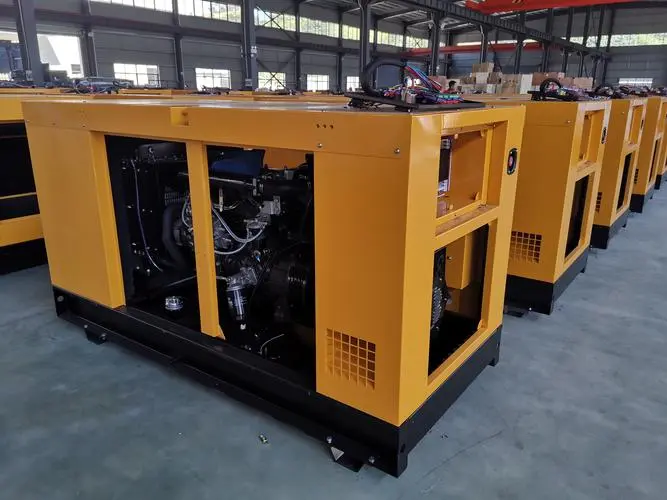Introduction (200 words)
Diesel generators have long been a reliable and essential source of power generation in various industries, including construction, mining, and telecommunications. However, the environmental impact associated with their operation has become a growing concern. To mitigate this issue, governments and regulatory bodies worldwide have implemented stringent emissions standards for diesel generators. This article aims to explore the importance of these standards, their impact on the environment, and the technological advancements that allow diesel generators to meet these requirements while continuing to provide reliable power.
1. Understanding Diesel Generator Emissions (400 words)
1.1. Types of Emissions
Diesel generators emit various pollutants, including nitrogen oxides (NOx), particulate matter (PM), sulfur dioxide (SO2), and carbon monoxide (CO). These emissions can have detrimental effects on both human health and the environment.
1.2. Environmental Impact
The release of these pollutants contributes to air pollution, smog formation, and the greenhouse effect, resulting in climate change. Additionally, PM and NOx emissions can lead to respiratory issues and other health problems in humans and wildlife.

2. Diesel Generator Emissions Standards (600 words)
2.1. Global Regulatory Bodies
Numerous regulatory bodies, such as the Environmental Protection Agency (EPA) in the United States, the European Union (EU), and the International Organization for Standardization (ISO), have established emissions standards for diesel generators. These standards aim to limit the release of harmful pollutants into the atmosphere.
2.2. Key Emissions Standards
This section will delve into the specific emissions standards set by different regulatory bodies, highlighting the permissible levels of pollutants, testing methods, and compliance requirements. Examples include the EPA Tier standards, EU Stage standards, and ISO 8178.
3. Technological Advancements for Emissions Reduction (800 words)
3.1. Engine Design
Manufacturers have made significant advancements in engine design to reduce emissions. This includes the utilization of high-pressure common rail fuel injection systems, exhaust gas recirculation (EGR), selective catalytic reduction (SCR), and diesel oxidation catalysts (DOCs).
3.2. Fuel Quality and Alternative Fuels
Improving the quality of diesel fuel by reducing sulfur content helps in reducing emissions. Furthermore, exploring alternative fuels like biodiesel, natural gas, and hydrogen holds promise for further emissions reductions.
3.3. Aftertreatment Systems
The integration of advanced aftertreatment systems, such as diesel particulate filters (DPFs) and diesel oxidation catalysts (DOCs), has greatly contributed to emissions reduction. These systems effectively trap and reduce harmful pollutants before they are released into the environment.
4. Diesel Generators For Sale and Challenges of Compliance (500 words)
4.1. Cost Considerations
Meeting stringent emissions standards often requires significant investments in research and development, engine modifications, and the adoption of new technologies. These costs can be a challenge for manufacturers and end-users, leading to increased generator prices.
4.2. Maintenance and Operator Training
Maintaining compliance with emissions standards necessitates regular maintenance and servicing of diesel generators. Additionally, operators must be trained to operate and maintain the equipment properly to ensure optimal performance and emissions reduction.
4.3. Impact on Power Generation Industry
Stricter emissions standards have forced industry players to adapt and invest in cleaner technologies. This section will explore the impact of emissions standards on the power generation industry, including market trends, innovation, and the emergence of greener alternatives.
5. Future Perspectives and Conclusion (300 words)
5.1. Future Emissions Standards
As environmental concerns continue to grow, it is likely that emissions standards for diesel generators will become even more stringent in the future. This section will discuss potential future developments in emissions standards and the technologies required to meet them.
5.2. The Importance of Collaboration
To achieve meaningful emissions reductions, collaboration between governments, regulatory bodies, manufacturers, and end-users is crucial. This collaboration can drive innovation, ensure compliance, and promote the adoption of cleaner power generation technologies.
In conclusion, diesel generators remain a vital source of power generation in various industries. However, their emissions have significant environmental implications. Stricter emissions standards, along with technological advancements, have paved the way for cleaner and more efficient diesel generators. Compliance with these standards not only reduces the environmental impact but also contributes to the overall sustainability of the power generation industry. By embracing advancements in engine design, fuel quality, and aftertreatment systems, the diesel generator industry can strike a balance between power generation and environmental responsibility.
